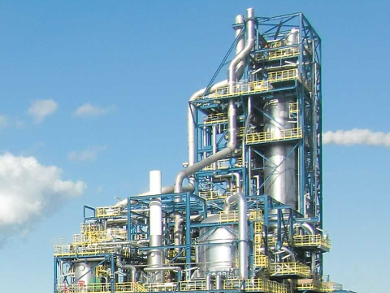The exhaust gases from steel mills are high in carbon dioxide and, therefore, promote global warming. The Carbon2Chem® project aims to reduce these CO2 emissions by converting them to useful compounds in chemical production plants.
The conventional production of urea as a fertilizer uses natural gas, water, or air as feedstock. Steel mill gases also contain all necessary components. Ömer Yildirim and colleagues, thyssenkrupp Industrial Solutions AG, Dortmund, Germany, have analyzed the feasibility of using such exhaust gases to produce urea, based on data from an existing steel mill in Duisburg, Germany.
The team evaluated the composition of the mill’s exhaust gases. Then they determined the amount of usable gases and the potential urea production capacity. The analysis is based on a conceptual design for the required production steps, i.e., synthesis gas generation, ammonia synthesis, and urea synthesis.
The results show that CO2 emissions can indeed be reduced while producing competitive amounts of urea. With the addition of green hydrogen (produced emission-free) during synthesis, almost half of the CO2 from the exhaust gases can be converted. Although complete life-cycle assessments are still required, urea plants could be helpful for reducing the CO2 emissions of steel mills.
- Chemical Conversion of Steel Mill Gases to Urea: An Analysis of Plant Capacity,
Ömer Yildirim, Klaus Nölker, Karsten Büker, Ralph Kleinschmidt,
Chem. Ing. Tech. 2018, 90, 1529–1535.
https://doi.org/10.1002/cite.201800019The article is part of the Chemie Ingenieur Technik Special Issue on Carbon2Chem®.




